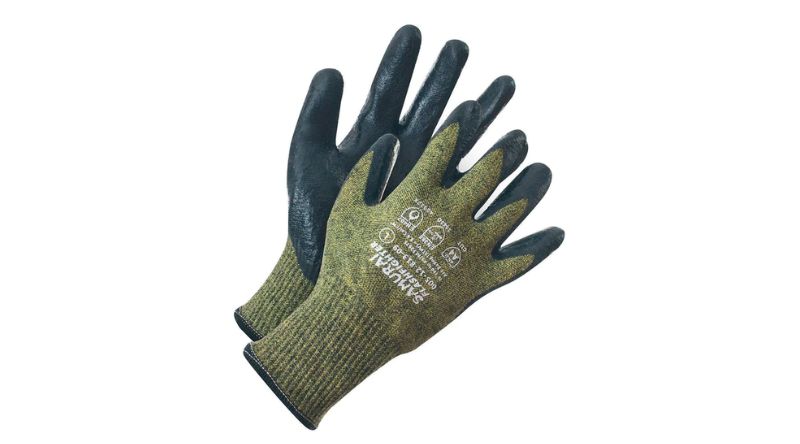
Safety gloves are essential in various industrial and manual labor fields to protect hands from many workplace hazards. Cut-resistant gloves can withstand sharp edges and slashes made from blades and sharp tools.
On the other hand, abrasion-resistant gloves can shield against wear and tear from rough surfaces and friction-based damage. Let’s look at the difference between cut- and abrasion-resistant gloves and how to choose the right one for your needs.
Cut-Resistant Gloves
Cut-resistant gloves use advanced materials such as Kevlar, Dyneema, and Spectra, offering superior protection against cuts and lacerations. These materials are often used in high-risk industries such as construction, metalworking, and glass manufacturing. Cut-resistant gloves come in different levels of protection, typically rated from A1 to A9 based on their resistance to cuts.
When selecting cut-resistant gloves, it's essential to consider the level of protection needed for your work environment. For example, if you are handling sharp or jagged materials, you may need a higher level of cut resistance. Additionally, it's crucial to check the sizing and fit of the gloves to ensure maximum dexterity and comfort.
Abrasion-Resistant Gloves
Abrasion-resistant gloves use leather, synthetic leather, and cotton that can endure heavy-duty use and protect against friction-based injuries. These gloves are common in the construction, landscaping, and gardening industries.
The thickness of the material is a crucial factor when choosing abrasion-resistant gloves. Thicker materials provide better protection against friction and wear and tear but may also decrease dexterity. It’s essential to balance protection and flexibility when selecting these gloves.
Choosing the Right Glove
Assessing your specific needs is important when deciding between cut- and abrasion-resistant gloves. Cut-resistant gloves would be the best choice if you work in an industry that involves sharp objects and blades. On the other hand, if your work involves handling rough materials or surfaces, abrasion-resistant gloves would be more suitable.
It's also crucial to consider the level of protection required for your specific tasks. A higher level of cut resistance may be necessary for jobs that involve heavy cutting or extreme hazards. Similarly, a thicker material would be suitable for heavy-duty or prolonged contact with rough surfaces.
Both cut- and abrasion-resistant gloves play crucial roles in protecting hands from different types of workplace hazards. By understanding the difference between these gloves and considering your specific needs, you can choose the right glove to keep your hands safe while on the job. Remember to always follow proper safety protocols and replace gloves when necessary to ensure continued protection.
If you're looking for hi-vis cut-resistant gloves or abrasion-resistant gloves, Hi Vis Safety has a wide selection. Browse our collection today to find the perfect gloves for your needs and ensure the safety of your hands on the job.
